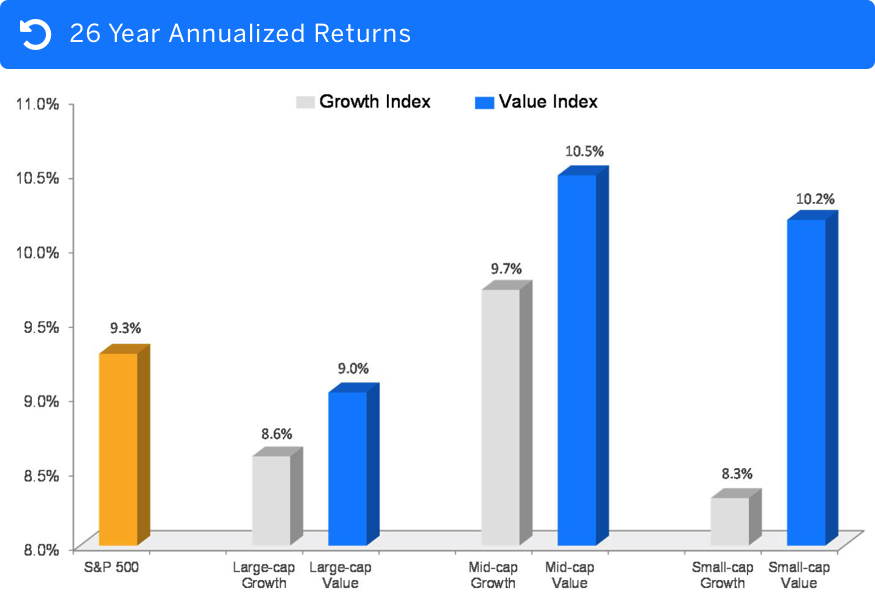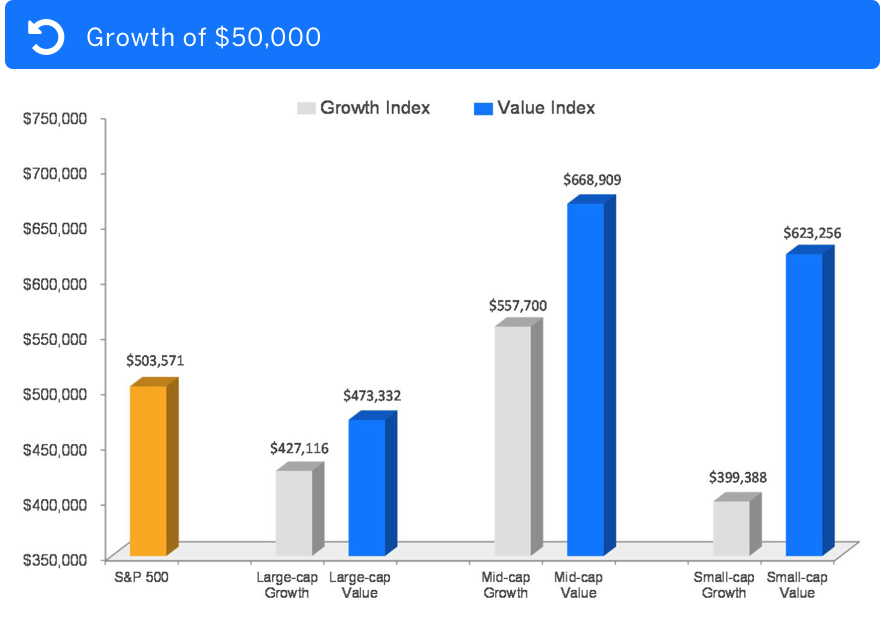- Difference between growth and value investing
- Comparing the results of growth vs. value investing
- Additional research on the effectiveness of fundamental investing
Whenever the topic of portfolio construction or investment strategy is discussed, growth stocks and value stocks will inevitably be considered. But what’s really the difference and where does fundamental investing come into play?
Growth vs. Value
Growth stocks are considered stocks that have the potential to outperform the overall markets over time because of their future potential. Shailesh Kumar of Value Stock Guide goes a step further by saying there are three kinds of growth stocks:
- A young company, an IPO
- An old company that fixed its problems and regained growth
- A small biotech or drug company
 This compares to value stocks which are companies trading below the price that analysts feel the stock is worth (i.e. fair value or intrinsic value). A stock’s fair value can be determined using various fundamental analyses such as a discounted cash flow analysis (DCF), a dividend discount model (DDM) and valuation multiples to name a few. To the right is an example finbox fair value for Gap:
This compares to value stocks which are companies trading below the price that analysts feel the stock is worth (i.e. fair value or intrinsic value). A stock’s fair value can be determined using various fundamental analyses such as a discounted cash flow analysis (DCF), a dividend discount model (DDM) and valuation multiples to name a few. To the right is an example finbox fair value for Gap:
Now which category yields the highest returns?
Comparing the results of growth and value investing
The chart below compares the 26-year annualized returns of the Russell 1000 index (growth / value) and the Lipper US Index (growth / value). The large-cap, mid-cap and small-cap value index clearly outperforms its growth counterpart. The most significant difference being the small-cap index yielding an approximate 2% spread.
 source: [Fidelity](http://res.cloudinary.com/finbox/image/upload/v1470255700/Performance_of_Value_versus_Growth_Stocks_-_Fidelity_rdn9cz.pdf)
source: [Fidelity](http://res.cloudinary.com/finbox/image/upload/v1470255700/Performance_of_Value_versus_Growth_Stocks_-_Fidelity_rdn9cz.pdf)
So what does this actually mean? Below I highlight what a $50,000 investment 26 years ago would have appreciated to (by index). Again, notice the significant $223,868 variance between the small cap indexes.
 source: [Fidelity](http://res.cloudinary.com/finbox/image/upload/v1470255700/Performance_of_Value_versus_Growth_Stocks_-_Fidelity_rdn9cz.pdf)
Note: While 26 years is a significant holding period, the results yield a similar outcome for 1-year, 3-year, 5-year and 10-year rolling periods.
source: [Fidelity](http://res.cloudinary.com/finbox/image/upload/v1470255700/Performance_of_Value_versus_Growth_Stocks_-_Fidelity_rdn9cz.pdf)
Note: While 26 years is a significant holding period, the results yield a similar outcome for 1-year, 3-year, 5-year and 10-year rolling periods.
While a strong portfolio may include a mix of growth and value stocks, value investing based on fundamentals continues to yield the highest returns compared to other stock investing strategies. I’ve included a few other helpful links below that share similar conclusions. However, if you think i’ve missed some, please email me at hogan-at-finbox.io.
Additional research on the effectiveness of fundamental investing


